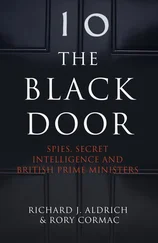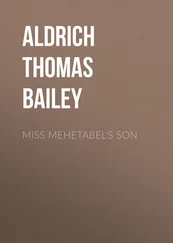Elint formed one of the closest parts of the Anglo-American sigint relationship during the immediate post-war period because it focused on the Soviet military target. Exchange on elint was not initially linked to the Allied sigint agreements reached at the end of the war, but in 1948 it was being brought within the growing body of Western intelligence pacts that formed UKUSA. GCHQ approached Washington with a proposal to ‘extend the present British-US Comint collaboration to include countermeasures, intercept activities and intelligence’ in the field of elint. This meant coordinated patterns of ‘ferret’ flights – effectively a division of labour – with the resulting intelligence being swapped ‘via Comint channels’. 15 By the 1950s, GCHQ had achieved control over elint in Britain, and so was managing relations with all the various American outfits in this field. This had meant redrawing GCHQ’s charter to include not only comint but also elint, something which had not pleased everyone. R.V. Jones, who was Director of Scientific Intelligence at the Ministry of Defence in the early 1950s, strongly resented losing this part of his empire; the benefits of having all activities superintended by GCHQ were nevertheless overwhelming. 16
Anglo-American sharing was important, because elint was an expensive business. Many of the target Soviet signals were short-range and could only be collected from ‘ferrets’, which were effectively flying intelligence stations. Initially, the RAF was ahead in this new field. By 1947 a fleet of specially equipped Lancaster and Lincoln aircraft patrolled the East German border, monitoring Soviet air activity. This was complemented by ground stations at locations such as RAF Gatow in Berlin listening to basic low-level Soviet voice traffic. British ‘ferrets’ made adventurous forays over the Baltic in June 1948 and the Black Sea in September 1948. Remarkably, they were soon crossing Iran to reach the Caspian Sea, thus flying perilous missions close to the very heart of the Soviet Union. 17 On the ground, a British undercover team was also operating in northern Iran, monitoring Soviet radar in the Caucasus as well as Soviet missile tests at Kasputin Yar on the edge of the Caspian. The team conducting this work were posing as archaeologists, a favourite British cover for all sorts of intelligence work. Once a week they drove from the Iranian border with the Soviet Union to the British Embassy in Tehran to deliver their precious tapes. 18
Early Western elint efforts in the air were spurred on by the knowledge that the Soviets had launched their own secret ‘ferret’ programme. In April 1948 an American radar station in Germany reported that it was being probed by ‘ferret’ aircraft, and in November a Soviet plane circled a US radar station at Hokkaido in Japan collecting signals for an hour, and then escaped without interception due to bad weather. Defectors also brought tantalising snippets. In May 1948 Baclav Cukr, General Secretary of the Czech Air Force Association, escaped to the West bringing knowledge of a group of Dakota-like planes at Zote airfield outside Prague. These mysterious aircraft were kept under constant guard in special hangars, and had ‘several special antennae on the outside’, a sure sign that they were elint collectors. 19
During the war the vested interests of many different RAF commands had made it difficult to create a single coherent elint organisation. 20 Post-war rationalisation allowed the fusion of these elements. RAF Watton in Norfolk was selected as the new home of elint, and collected the remnants of many wartime units into 100 Countermeasures Group. 21 The result was a weird menagerie of aircraft which were one-off flying laboratories adapted for various special tasks. The mainstays were twenty ageing Handley Page Halifax bombers. There were also B-17 Flying Fortresses, Lancasters, Mosquitoes and Avro Ansons, together with an Airspeed Oxford and a Percival Proctor. The unit at Watton soon received some new Avro Lincolns, effectively updated Lancasters. All were stuffed with unique items of electronic listening equipment and primitive wire recorders for collecting voice traffic.
Christened the Central Signals Establishment, or ‘CSE’, Watton boasted a Signals Research Squadron, a dedicated sigint unit known as Monitoring Squadron and a Radio Countermeasures Squadron. The Avro Lincolns were the best aircraft available, and they were given over to radio countermeasures and radar jamming, since they would have to work closely with RAF bomber formations in any future war with the Soviet Union. The Lincolns would soon be fitted with the revolutionary new carcinotron, or ‘backward wave oscillator’, in effect an electronic gun that produced powerful microwaves of the same frequencies used by radar, giving them enormous onboard jamming power. By contrast, some of the other airframes used for listening were antique. However, it was a venerable Halifax from Monitoring Squadron that was despatched on sigint collection duty over the Soviet Zone of Germany during the early stages of the Berlin Blockade in 1948. This was the first sign of a possible ‘hot war’ between East and West, and GCHQ decided it was time to share the lessons of sigint more widely. For the first time lectures on radio countermeasures and tactical sigint were given to officers passing through the RAF Staff College at Bracknell. A handbook on tactical sigint was prepared for all staff officers, albeit no mention was made of the mysterious ‘Ultra’. 22
In 1951 the monitoring aircraft were rechristened 192 Squadron, and worked ever more closely with GCHQ. Meanwhile the radio countermeasures and jamming unit was rebranded as 199 Squadron. The RAF received four Boeing RB-29 ‘Washington’ aircraft, which were really American B-29 Superfortresses modified for listening. Their vast internal space allowed additional sigint equipment to be fitted by the sigint ground engineers at RAF Watton, who were known as the Special Radio Installation Flight, or ‘SRIF’. In 1953 two English Electric Canberras were acquired and refitted for secret sigint operations by SRIF. Their standard duty was flights along the borders of the Warsaw Pact, alternating with longer visits to the Baltic and the Mediterranean. Training of special operators was undertaken on slow but reliable Vickers Varsity aircraft. 23
Beneath the sea, an even more sensitive sigint programme was under way. Much of what London and Washington knew about the Soviet Navy had been derived from captured German intelligence material harvested from Berlin in 1945, or from what the British had gleaned directly from their surprisingly good relations with the Soviet Navy during the war. However, this information was now outdated. The US Navy decided to send two submarines into the Bering Sea to test the possibility of undertaking listening operations off the major Arctic ports used by the Soviets. These successful pilot operations were limited to an investigation of the area using sonar. A much more ambitious mission was then attempted. This was a proper sigint collection operation, designed to scoop the signals that emanated from regular Soviet missile tests in the Barents Sea. 24
In the summer of 1949 the US Navy picked its latest submarines for this mission, the USS Cochino and the USS Tusk. They had been built at the end of the war, and in 1948 they were modified to bring them up to U-boat standards and fitted with the latest snorkels. This allowed them to run submerged for long periods on diesel power, venting their exhaust to the surface. They had also been streamlined and fitted with the fastest available propulsion systems. The specialist elint equipment for capturing missile control signals, or ‘telemetry’, was installed by British sigint technicians at Portsmouth. The submarine chosen for fitting was the Cochino , under Commander Rafael Benitez. The name ‘Cochino’ was supposed to denote a species of trigger fish, but in Spanish it simply meant ‘The Pig’. Preparations were masterminded by Harris M. Austin from the US Naval Security Group and civilian sigint engineers. Additional aerials, known as ‘ears’, were fitted to the tailfin. The elaborate listening technology required the drilling of small holes for wires in the submarine’s pressure hull, which weakened it and did not best please the crew. Trials were held along the British coast in July 1949. In August the Cochino, escorted by three other submarines, including the Tusk, headed for Arctic waters. In the Barents Sea, the Cochino separated and sat off the coast hoping to collect the high-frequency signals that indicated a missile test, but found nothing of great interest. After a few days of lurking, it headed back to a rendezvous with the Tusk. 25
Читать дальше












